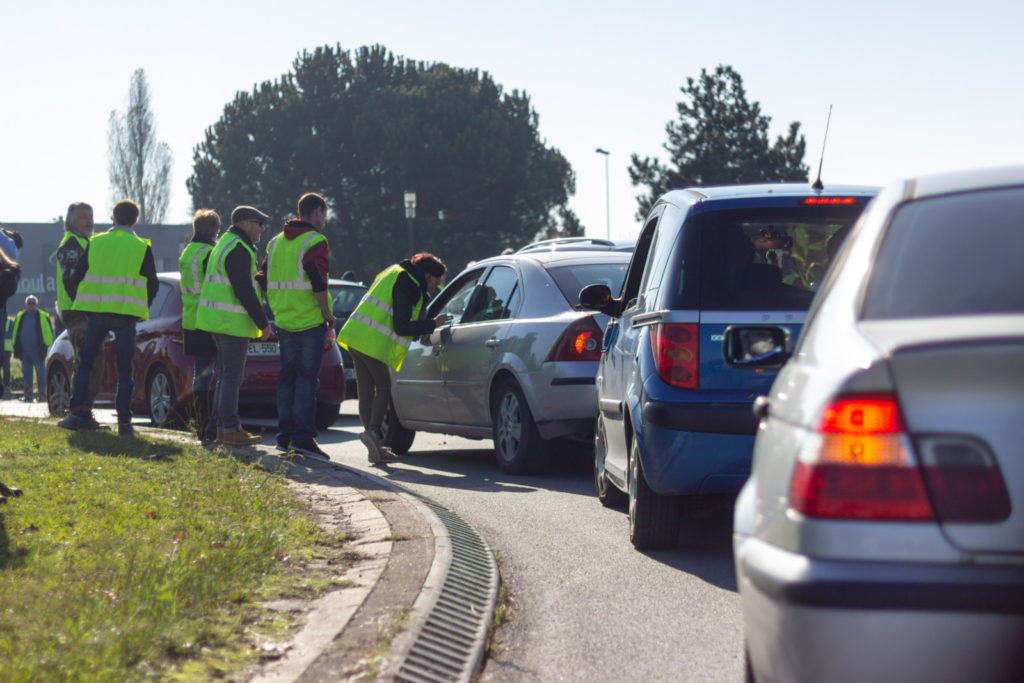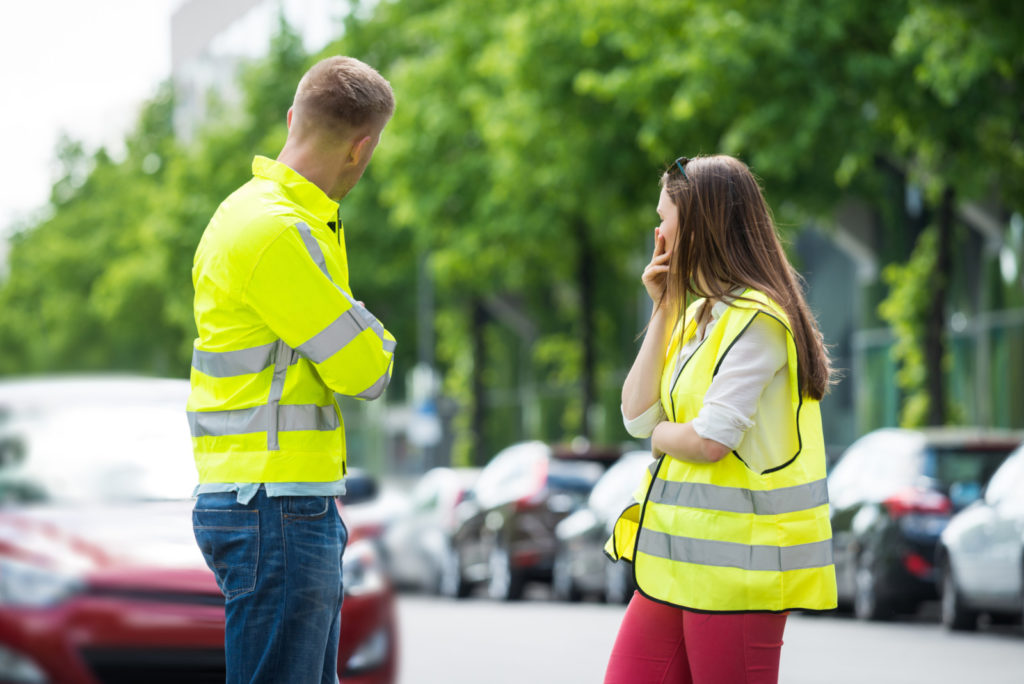Since its beginning the 17 last November, the movement of Yellow Vests is the news that echoes in the media. This demonstration has already caused a lot of damage in France. It has grown and many are wondering about the future of this movement. How long will the blockages last? Will the demonstration take on other proportions? A brief reminder of the origin and the main demands of the Yellow Vest movement, while discussing how this movement can end ...
The origins of the Yellow Vests movement and its specificities (compared to other popular protests)
Unlike other previous events organized by trade union associations, the launch and development of this mobilization was carried out entirely from the Internet without a real leader (it is a spontaneous citizen movement). This through social networks such as Facebook, YouTube and Twitter, but also through dedicated platforms… For example, on Econology, we are talking about movement of yellow vests on forums since November 4. This topic already has more 800 interventions (that it is for or against the movement) since this date!
Following the rise in fuel prices and the announcement of the application of new taxes in January 2019, the Yellow Vests movement began with the dissemination on social media ofcalls from citizens to protest. Indeed, on May 29, 2018, Priscilla Ludosky, a motorist from Seine-et-Marne, launched an online request to demand a reduction in fuel prices at the pump. In the introduction to its request, it mentions the increase of 3,8 cents / liter for gasoline and 7,6 cents / liter for diesel, implemented from January 2018. In addition, the motorist clarified the importance of taxes reported at the price of the product.

Once launched, the query was instantly successful. On October 25, 2018, it collected up to 226 signatures. At the end of November, that number exceeded one million.
Two truck drivers (Eric Drouet and Bruno Lefevre) from Seine-et-Marne publish on Facebook a call for national blocking against the rise in fuel prices October 10. This block is scheduled for November 17. The organization of the demonstration took place during this first national demonstration, which continued every day and until today. This demonstration is said to be unstructured because at the moment it has no designated representatives. The partisans do not want to be chaired by unions, let alone by politicians.
Who are the yellow vests?
The protest movement of the Yellow Vests is carried out in the manner of a jacquerie. It is therefore a citizen movement arising from popular fed up, caused by a tax system judged, for certain reasons, badly distributed or unfair. The participants are mainly citizens representing the middle class who are tired of being economically bludgeoned from all sides. They are mainly inhabitants of peri-urban areas (population of outlying towns) and rural areas, craftsmen, owners and employees of small businesses ...
Public opinion and opposition parties in support of the mobilization
According to the survey, public opinion broadly supports the Yellow Vest movement and that from the beginning. Those providing support include the popular categories, as well as the inhabitants of rural communes and small towns. But also big cities since polls were used, at the end of November, to more than 80% support for movement!
In addition, many leaders of opposition political parties also support the demonstration, namely Nicolas Dupont-Aignan, Jean Lassalle, Marine Le Pen, Jean-Luc Mélenchon and Laurent Wauquiez ... with more or less effective political recovery attempts ...
The main claims
If, originally, the movement of the Yellow Vests was focused only on the increase in the price of fuel and the tax and their increases deemed excessive, this is no longer the case only now. The demands have largely extended to touch almost all the economic aspects of French society, that is to say all the sensitive points deemed unjust by the citizens. Thus, in addition to the cost of fuel, they also concern the price of tolls, technical inspections of cars, measures unfavorable to motorists, the purchasing power of the middle and working classes, privatized public debt through finance, education, retirement, Citizen Initiative Referendum (RIC)... Some even demand the resignation or the dismissal of President Emmanuel Macron.

How and when can the yellow vests move and will it end?
The violence caused by the mobilization of the Yellow Vests has already caused significant material damage by small isolated groups. Paris is particularly affected by violence. Nevertheless, the figures showed that economically it was one of the regions which had suffered the least losses in terms of turnover.. The most affected region is Champagne-Ardennes.
The demonstration on November 17 began very early in the capital. The blockade of the outskirts began around 7:30 a.m., when tens of thousands of demonstrators marched on the avenue des Champs-Élysées in the early afternoon. On their way to the Elysée Palace, they blocked the Place de la Concorde.
The Interior Ministry communicates the figures for the day of November 17 the next day. According to him, there are 287 demonstrators around 710 p.m. throughout France, 17 sites occupied by the demonstrations, 2 people injured, 034 dead, 409 arrests including 1 in police custody. However, according to elected officials from left and right, the Ministry of the Interior underestimated these figures.
Blockades subsequently continued across France and the number of supporters grew. High school students also join the mobilization to protest against the baccalaureate reforms. The arrests are increasing and since December 8, the government has deployed 89 police officers on French territory, with 000 armored vehicles of the Gendarmerie in Paris.
According to figures from the Ministry of the Interior collected following the demonstrations, there are 136 demonstrators, 000 arrests (1 in Paris) and 723 police custody.
The future of the Yellow Vests mobilization
The government has announced that the claims of Yellow Vests could not be easily resolved.
During his televised speech on Monday, December 10, President Emmanuel Macron announced some measures he wishes to put in place to attempt to resolve the claims of the yellow vests. Among these immediate measures, there is the increase of 100 € / month in the activity bonus for employees with the minimum wage who can touch it (and not the minimum wage as many people believed on Monday evening), the abandonment of the increase in the CSG for retirees receiving less than € 2 / month and the tax exemption for overtime.
However, for Yellow Vests, the President's announcements did not sound like real proof of efforts to revalue their purchasing power and their social condition. France Insoumise does not hesitate to talk aboutscam about Macron's proposals of 10 december.
The demonstrators are studying how they will continue their fight. How can we best make ourselves heard in the face of a government which seems to turn a deaf ear to the difficulties of a growing number of French people? And this fight does not only concern the French since Yellow vests have appeared in other countries. Especially in Belgium, where important actions have already been taken, such as blocking fuel depots!
The Yellow Vest movement does not yet have a leader. Some of them are in favor of holding representative elections. Despite the differences of opinion, all supporters seem inclined to move towards the structuring of the movement.
An act V is very strongly possible for Saturday 15 December. Jean-Luc Mélenchon even encourages the continuation of this mobilization.
So far it is difficult to know when and especially how the movement of the Yellow Vests will end. As long as the demands are not met, revolts will continue. On the government side, Emmanuel Macron and Edouard Philippe are looking for a way to avoid Act V ... most certainly in vain! Except through ever more violent police and state repression? These methods of intimidation, used in the first 4 acts against, in particular, journalists, seem unworthy of a democracy like France!
Let’s hope that act 5 of tomorrow will show less violence… and this in both camps!
